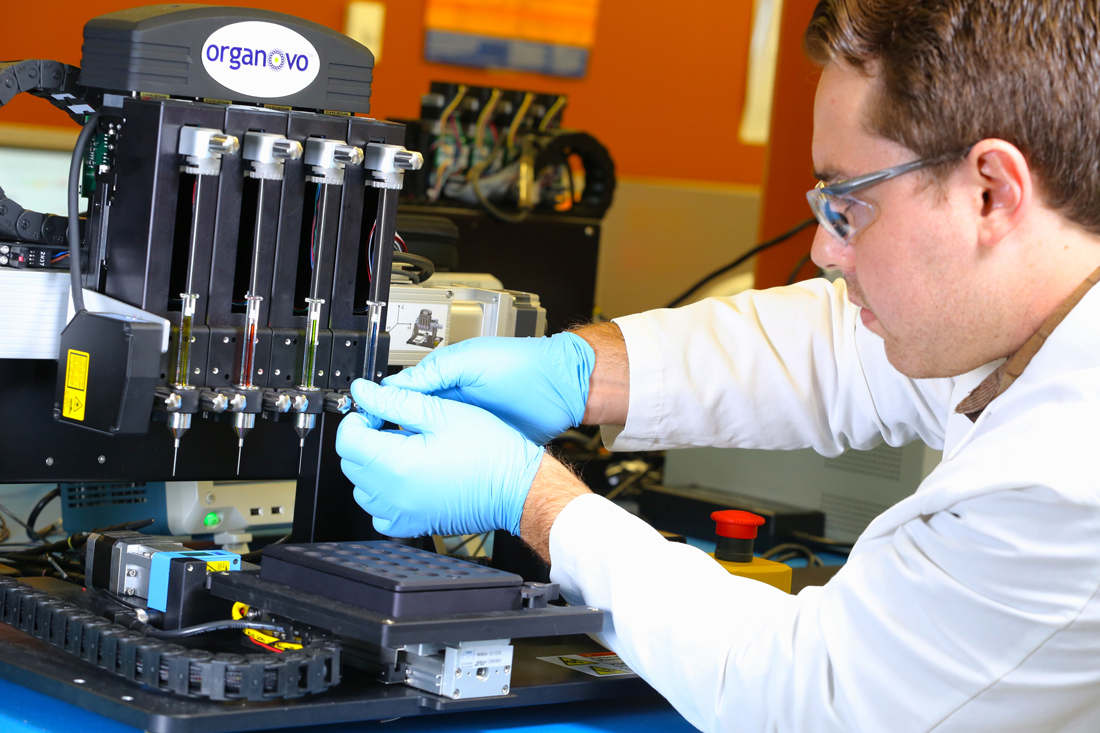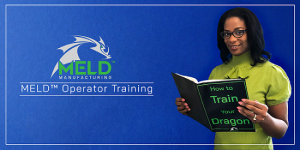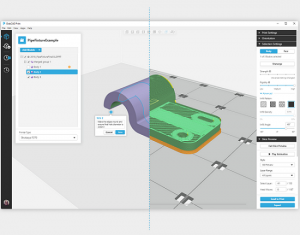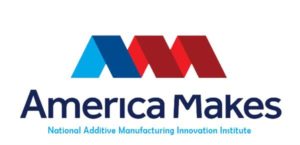Gaining a competitive advantage is at the core of most businesses. That is why the financial world has a section dedicated exclusively to study the behind-the-scenes of mergers and acquisitions (M&A). Between 1893 and 1904, the first wave of M&As became commonly known as the “great merger movement” in the US business scene, particularly the manufacturing sector. We’ve come a long way since then, and the two words became quite consolidated among financial experts and economic gurus as they decisively found M&As as a way to increase market shares, eliminate the competition or increase business diversification. However, contrary to what most people think, and according to a Harvard Business Review report, the failure rate for M&As is between 70% and 90%. And a KPMG study particularly determined that 83% of merger deals did not boost shareholder returns. Meaning they are not the best choice for most companies. That could be the case with bioprinting pioneer Organovo.
 Last January, the company, announced a merger with Tarveda Therapeutics, a privately-held clinical-stage biopharmaceutical firm. However, at the time, the founder and former Chief Executive Officer (CEO) of Organovo, Keith Murphy, spoke against joining forces with Tarveda as part of a strategic alternative in the development of its human liver tissue for transplant. And just this Monday, Murphy decided to issue a new letter to stockholders discouraging them to vote in favor of the proposed merger with Tarveda, alleging that the firm’s financial position is “dismal” as well as the company’s “lack of synergies” and “highly questionable future prospects,” further reinforcing why a merger would be a terrible outcome for Organovo stockholders.
Last January, the company, announced a merger with Tarveda Therapeutics, a privately-held clinical-stage biopharmaceutical firm. However, at the time, the founder and former Chief Executive Officer (CEO) of Organovo, Keith Murphy, spoke against joining forces with Tarveda as part of a strategic alternative in the development of its human liver tissue for transplant. And just this Monday, Murphy decided to issue a new letter to stockholders discouraging them to vote in favor of the proposed merger with Tarveda, alleging that the firm’s financial position is “dismal” as well as the company’s “lack of synergies” and “highly questionable future prospects,” further reinforcing why a merger would be a terrible outcome for Organovo stockholders.
Under the terms of the original deal, announced in the company’s annual report published on December of last year, Tarveda would merge with a wholly-owned subsidiary of Organovo in an all-stock transaction and upon completion of the merger, the merged company would operate under the name Tarveda Therapeutics and trade on the Nasdaq Stock Market under the ticker symbol TVDA. Without any mention of Organovo’s bioprinting technology, we were left to wonder at the time whether the company’s pioneer technology and research activities would cease to exist.
Just like in January, this new letter provides details of what Murphy considers is wrong with Tarveda, even describing it as a company that “possesses unattractive technology that needs a bailout, via a reverse merger, just to survive.”
Murphy’s insistence on stockholders to vote “against” the merger is quite valid since the actual merger is still subject to customary closing conditions, which means that the merger still requires the approval of stockholders. Last December, Organovo directives suspected that the merger would be completed sometime in late 2020, however, stockholders may be persuaded either way in this waiting game.
Although personally attached to the biotechnology firm, Murphy resolves to take this drastic measure in order to speak directly to stakeholders, describing, not only, Tarveda’s “weak financial position with unexciting technology and unattractive prospects”, but also recognizing that Organovo is today “in its own precarious position due to recent mismanagement.” Concluding that he firmly believes that “the transaction being irrationally championed by the Board runs completely counter to stockholders’ best interests.”
Bioprinting startups are emerging, and researchers’ interest in technology worldwide is helping many firms compete to develop better machines or upgrade previously successful ones. Organovo was one of the big driving forces behind bioprinting technology in the 2000s. However, recently, other companies have proven to be more successful, while Organovo’s stock price has been depressed for the past five years, going from USD 5.04 on June 6, 2015, to USD 0.27 on March 25, 2020.
On this last point, Murphy argues in his letter that “Organovo’s stock has been a relatively safer harbor, trending with the NASDAQ overall. Considering Organovo has natural downside protection due to being valued near its book value, I believe that waiting—and not consummating a reckless merger—may be the best course until the current storm has passed [that is, the novel coronavirus that began in December 2019].” While suggesting that, in contrast, “Tarveda is a company in need of additional capital beyond Organovo’s current cash in order to fund clinical trials to a successful point.”
In April 2017 Murphy stepped down as CEO of Organovo to create a new company, Viscient Biosciences, to develop drugs using human 3D bioprinted tissues. Nonetheless, he remained close to Organovo as chairman of the board and company advisor, even proposing a merger at one point between Viscient and Organovo to unlock 3D bioprinting potential.
In fact, Murphy maintains in his letter that “my assessment is unaffected by the Board’s decision to not pursue a merger with Viscient Biosciences (“Viscient”). While I firmly believe that the Board failed to create value for stockholders when it rebuffed what could have been a very synergistic merger with Viscient, I am fully aligned with you and recognize that there are many other viable combination partners out there. However, Tarveda is by no means an attractive deal partner.”
A few other reasons Murphy found discouraging against the merger involve Tarveda’s loss of its longtime Chief Scientific Officer (CSO), who was also President of Research & Development, in 2019, which he considered “hardly the sign of a strong technology.” As well as Tarveda’s downward trajectory following a prior record of poor investments, and that the company was running out of money in late 2019, with no venture capital funds or public market investors apparently eager to invest.
Massachusetts-based company Tarveda has been focused on developing Pentarin, a precision oncology medicine that selectively accumulates anti-cancer payloads within solid tumors. The company claims that following the closing of the merger, they intend to continue to focus on advancing two clinical-stage oncology programs, PEN-866 and PEN-221, and on the further development of novel conjugates from its proprietary miniature drug conjugate platform. Moreover, at the closing of the merger, they estimated that the combined company will have approximately 35 million dollars of cash on hand that is expected to provide sufficient funding into the second half of 2021 to achieve key upcoming clinical data milestones on both clinical programs.
Moreover, at the closing of the merger, they estimated that the combined company will have approximately 35 million dollars of cash on hand that is expected to provide sufficient funding into the second half of 2021 to achieve key upcoming clinical data milestones on both clinical programs.
Nonetheless, towards the end of the letter, Murphy offers three other options that he considers superior to the Tarveda transaction:
- The Board can abandon the merger to re-focus on organic growth via bioprinting.
- The Board should reconstitute its membership so that if the Board does not see the value of Organovo’s bioprinting opportunity following an abandoned or defeated merger, they should step down.
- The Board can run an improved Strategic alternatives process and rather than combining with a company that is in retreat, running low on capital and can only scrape together several months of cash in connection to the merger, the Board could admit its mistake and aim to find a combination partner that has upward trending progress of any type or the ability to leverage the company’s world-class bioprinting technology.
As Murphy concludes his arguments, he urges stockholders to review the terms of the merger closely, considering that they are “built on hopes and speculation about products and developments that I believe the circumstances prove have not been able to interest investment funds and have already lost support from VC [venture capital] funds.” He also believes that the “Board has not earned the right to have stockholders trust its judgment or its recommendation with respect to this merger. The Board’s record of value destruction speaks for itself.”
Organovo’s 3D bioprinting technology platform was once leading studies of 3D printed liver tissue, which was determined to even be capable of surviving and functioning inside an animal test subject. However, beyond 2017, reporting on biotechnology research from Organovo was hard to come by, and the company began to slip under the radar. Immediately after Murphy stepped down as CEO, Organovo holdings stock fell 5.2%, and a year later it dropped more than 28% as investors began growing impatient with the company’s slow pace of growth for its technology platform and products, which continued to deplete cash reserves. The company faces an uncertain future, and this new letter sheds new light on a merger that might or might not happen. Either way, stockholders will have to make their decision. Murphy already has. If you wish to read the letter by Keith Murphy follow this link.
The post Former CEO of Organovo Urges Stockholders Against Merger with Tarveda appeared first on 3DPrint.com | The Voice of 3D Printing / Additive Manufacturing.









